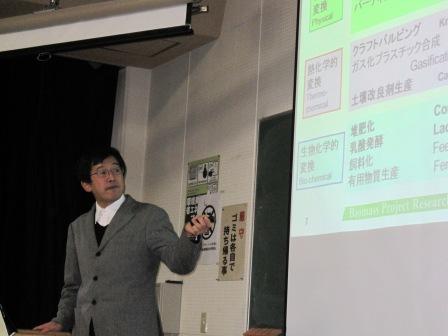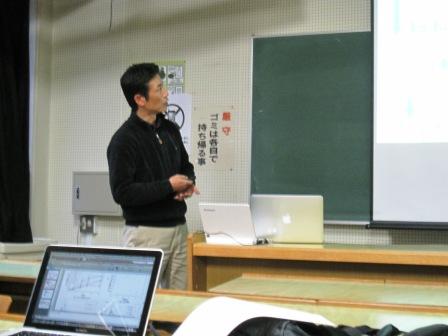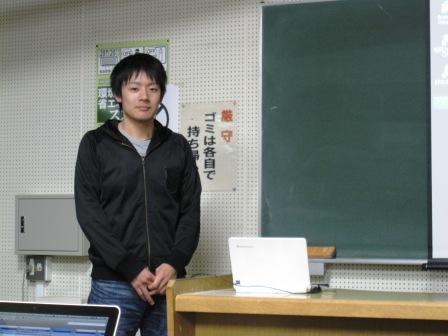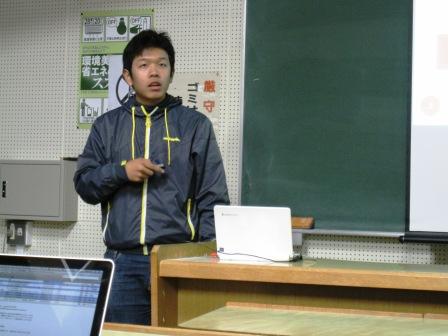On Dec 17, 2012, the 4th Biomass Evening Seminar was held at Graduate School of Engineering, Hiroshima University.
Commentary:Yukihiko MATSUMURA |
 |
|
|
|
"Production of functional lipids by marine microbe, thraustochytrid" Tsunehiro AKI The marine microbe thraustochytrid (genus Aurantiochytrium) produces significant amount of functional and industrially useful lipids such as docosahexaenoic acid, astaxanthin, and squalene. |
 |
|
"Temperature effect with catalyst on reaction characteristics of supercritical water gasification of glucose" Hokuto TAKAI Supercritical water gasification (SCWG) is a promising technology for gasifying biomass with high moisture content. |
 |
|
"Enzymatic hydrolysis for cellulose in homogeneous phase" Kornpat NAIYAPORN Cellulose hydrolysis pretreatment was conducted using a flow reactor so that cellulose could be dissolved in water. The produced oversaturated cellulose solution was further treated by the homogeneous enzymatic hydrolysis. Two enzymes were applied in series, cellobiosidase followed byβ-glucosidase. Glucose yield of 0.24 was obtained after enzymatic hydrolysis. |
 |
[Inquiries about this article]
Graduate School of Engineering, Hiroshima University
Y.NAKASHIMA
Phone:082-424-5762

 Home
Home